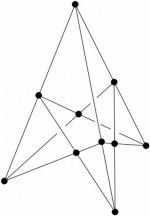Our Changing World for Thursday 6 August 2009
Malaria
Every year hundreds of millions of people suffer from malaria, and millions - especially young children - die from it. Alison Ballance talks with Colin Sutherland from the London School of Hygiene and Tropical Medicine about this deadly disease, its evolutionary history - especially the evolution of drug resistance - and finds out about research into public health measures that can help halt its spread. Colin Sutherland's research areas include drug resistance, infectious disease, malaria, molecular epidemiology and parasites, and he was in New Zealand earlier this year taking part in the Bio-ed conference, held as part of the international Charles Darwin celebrations. Listen here for an Our Changing World story about avian malaria.
Fake Pharmaceuticals

Pollen grains and a mite (centre) found in fake pharmaceuticals (image: Dallas Mildenhall)
Although fake pharmaceuticals are not yet a major concern in New Zealand, they are a huge problem in other parts of the world. One way to detect a non-genuine drug is by identifying fake holograms on the packaging (pdf). Last week on Our Changing World, Dallas Mildhenhall from the Institute of Geological and Nuclear Sciences explained how tiny pollen grains and spores can be used to help solve criminal cases. He has also pioneered their use in detecting fake pharmaceuticals, like anti-malarials, as a recent article in the New York Times outlined.
 Matroids
Matroids
Matroids are abstract objects that lie just beneath the surface of many naturally-occurring mathematical entities. In the late 1960s a catalogue of up to eight element matroids was constructed. Recently, Dillon Mayhew from Victoria University and his Australian colleague, Gordon Royle, constructed a catalogue of up to nine element matroids. In both instances, the advances would not have been possible without computers. To the right is one of Dillon Mayhew's favourite matroids.
The Genetics of Honey Bee Caste Development

Honey bees are useful in many ways - they pollinate our crops, and they provide us with honey. And it turns out they're also a very useful 'model' animal for genetic research, and one whose complete genome has been sequenced. Geneticist Peter Dearden (above) and PhD student Rosannah McCartney are investigating how bees can produce two distinct kinds of females - workers and queens - from a single genome. Peter Dearden is in the Laboratory for Evolution and Development, Biochemistry Department at the University of Otago, and he is also the Director of Genetics Otago, a new research group which was launched in Dunedin on 6 August.

Cells containing queen larvae, and (right) workers clustered around queen bee (all images: Laboratory for Evolution and Development)